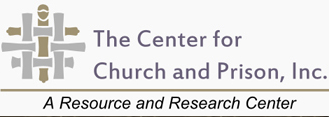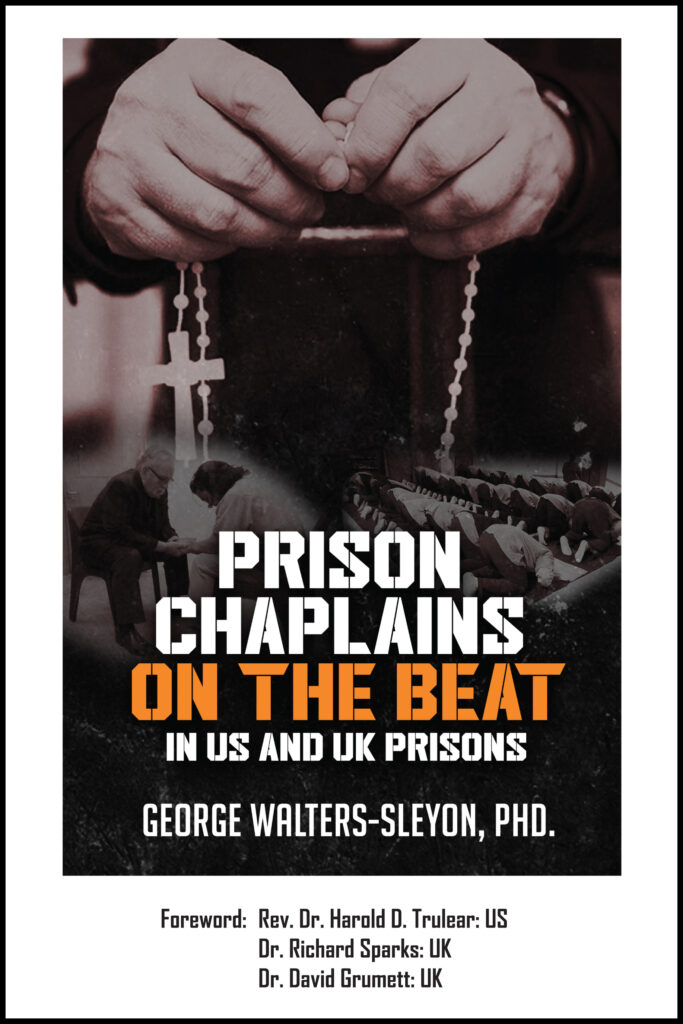Prison Reform News
Prison Reform News
- You Get What You Measure: New Performance Indicators Needed to Gauge Progress of Criminal Justice Reform Harvard Kennedy School, May, 2018(This report argues that we need new performance measures that shed light on correctional population composition and recidivism by risk in order to gauge the effectiveness of reform efforts.)
- Report to the United Nations on Racial Disparities in the U.S. Criminal Justice System The Sentencing Project, April, 2018“This report chronicles the racial disparity that permeates every stage of the United States criminal justice system, from arrest to trial to sentencing to post prison experiences.”
- The State of Justice Reform 2017 Vera Institute of Justice, March, 2018(This report identifies the major trends & developments in the justice system during 2017, and looks ahead to how this new policy landscape will inform criminal justice reform work in 2018.)
- Louisiana’s 2017 Criminal Justice Reforms: The most incarcerated state changes course The Pew Charitable Trusts, March, 2018(On June 15, 2017, Louisiana Governor John Bel Edwards (D) signed the most comprehensive justice reform package in state history, projected to reduce prison & community supervision populations, and save taxpayers $262 million dollars over a 10 year period.)
- Mass Incarceration: The Whole Pie 2018 Prison Policy Initiative, March, 2018(Mass Incarceration: The Whole Pie answers the essential questions of how many people are locked up, where, and why.)
- 50-State Report on Public Safety The Council of State Governments, March, 2018(This report brings together data from all 50 states on crime, recidivism, corrections trends, and key findings from research on what works to guide the design of new public safety efforts.)
- Survey of State Criminal History Information Systems, 2016: A Criminal Justice Information Policy Report Bureau of Justice Statistics, February, 2018(This report shows that there are 110,235,200 criminal history files across the U.S., including Puerto Rico and Guam.)
- The Mercy Lottery: A Review of the Obama Administration’s Clemency Initiative NYU Law School, January, 2018(This report analyzes President Obama’s clemency initiative and tells the stories of individual petitioners who were either denied clemency or whose petitions were never granted, despite being ideal candidates by the Initiative’s own terms.)
- Advancing Sensible Justice in Tennessee Beacon Center of Tennessee, January, 2018(More than 130,000 Tennesseans are behind bars or working through the criminal justice system. This report calls for a sharp change in the state’s criminal justice system in order to reduce costs, increase public safety, and prevent recidivism.)
- Using Behavioral Science to Improve Criminal Justice Outcomes: Preventing Failures to Appear in Court ideas42 and the University of Chicago Crime Lab, January, 2018(This report illustrates how a behavioral science approach to criminal justice can result in a more fair and efficient system.)
- Winnable criminal justice reforms: A Prison Policy Initiative briefing on promising state reform issues for 2018 Prison Policy Initiative, December, 2017(This briefing outlines a number of criminal justice policy reforms lawmakers can implement to reduce mass incarceration in 2018.)
- Florida Criminal Justice Reform: Understanding the Challenges and Opportunities The Project on Accountable Justice, November, 2017(This report is an effort to help Florida’s citizens and policy makers understand the nature of some of the problems found in the criminal justice system, notably resulting in dangerous prisons. It also suggests opportunities for reform.)
- (New) Disrupting the Cycle: Reimagining the Prosecutor’s Role in Reentry NYU Center on the Administration of Criminal Law, November, 2017(Prosecutors have traditionally focused on their “front-end” role, but by defining their role as ending at case disposition, prosecutors miss an important opportunity to have a greater impact on public safety.)
- Reforming Criminal Justice: Bridging the Gap Between Scholarship and Reform Academy for Justice, October, 2017(This report covers dozens of topics within the areas of criminalization, policing, pretrial and trial processes, punishment, incarceration, and release.)
- Women’s Mass Incarceration: The Whole Pie 2017 Prison Policy Initiative, October, 2017“This report provides a first-of-its-kind detailed view of the 219,000 women incarcerated in the United States, and how they fit into the even larger picture of correctional control.”
- A Matter of Time: The Causes and Consequences of Rising Time Served in America’s Prisons Urban Institute, July, 2017(• A growing share of the U.S. prison population has been incarcerated for 10 or more years ” and in at least 11 states the number of people in prison for a decade or longer has more than doubled since 2000.)
- The Prison Paradox: More Incarceration Will Not Make Us Safer Vera Institute of Justice, July, 2017“The impact of incarceration on crime is limited and has been diminishing for several years. Increased incarceration has no effect on violent crime and may actually lead to higher crime rates when incarceration is concentrated in certain communities.”
- The Status of Black Women in the United States Institute for Women’s Policy Research, June, 2017“The intention behind this report is to make visible the experiences of Black women in our economy and our democracy.”
- Trends in U.S. Corrections Sentencing Project, June, 2017(This fact sheet, updated June�|2017, provides a compilation of key developments in the criminal justice system over the past several decades.)
- Trends in U.S. Corrections Sentencing Project, June, 2017(This fact sheet, updated June�|2017, provides a compilation of key developments in the criminal justice system over the past several decades.)
- The Use and Impact of Correctional Programming for Inmates on Pre- and Post-Release Outcomes National Institute of Justice, June, 2017“This paper reviews the available evidence on the impact of institutional programming on pre- and post-release outcomes for prisoners.”
- A Federal Agenda to Reduce Mass Incarceration Brennan Center for Justice, May, 2017“Federal funding drives state policy, and helped create our current crisis of mass incarceration. And the federal government sets the national tone, which is critical to increasing public support and national momentum for change.”
- The Case for Paid Apprenticeships Behind Bars Center for American Progress, April, 2017“This brief argues that greater access to paid prison apprenticeship programs could effectively improve inmates’ post-release outcomes, particularly for a group of individuals who already face significant barriers to labor market entry.”
- Mass Incarceration: The Whole Pie 2017 Prison Policy Initiative, March, 2017(Mass Incarceration: The Whole Pie answers the essential questions of how many people are locked up, where, and why.)
- Guideposts for the Era of Smart Decarceration Center for Social Development, February, 2017(This report offers strategies for practitioners, advocates, reformers, and researchers with an interest in transforming the criminal justice system.)
- Following the Money of Mass Incarceration Prison Policy Initiative, January, 2017“In this first-of-its-kind report, we find that the system of mass incarceration costs the government and families of justice-involved people at least $182 billion every year.”
- Expanding the Reach of Victim Services: Maximizing the Potential of VOCA Funding for Underserved Survivors Vera Institute of Justice, August, 2016“Too often, victims of crime who are from underserved backgrounds are left out of victim services. With this new infusion of funds, the field can grow to better provide for marginalized people.”
- Making Hard Time Harder: Programmatic Accommodations for Inmates with Disabilities Under the Americans with Disabilities Act AVID Prison Project, July, 2016“This report…aims to highlight the difficulties that inmates with disabilities face as they seek to access programs and services in state prison systems.”
- Interim Report of The President’s Task Force on 21st Century Policing President’s Task Force on 21st Century Policing, March, 2015“The President should support and provide funding for the creation of a National Crime and Justice Task Force to review and evaluate all components of the criminal justice system.”
- The High Costs of Low Risk: The Crisis of America’s Aging Prison Population The Osborne Association, July, 2014“…at present, twenty-eight states hold more than 1,000 older prisoners, up from just two states in 1990.”
- Barriers to Recreation at Rikers Island’s Central Punitive Segregation Unit New York City Board of Corrections, July, 2014“…while the CPSU population hovers around 400 people, fewer than 40 prisoners are experiencing the mandated hour outside their solitary confinement cells on an average day.”
- The Case for Independent Oversight of Texas’ Prison System: Pursuing Accountability, Efficiency, and Transparency Texas Criminal Justice Coalition, March, 2013“For Texas communities and the State, there are clear public safety and cost-savings benefits to developing a system of independent, external oversight for Texas prisons, but those living and working in the prisons on a daily basis will benefit most.”
- Performance Incentive Funding Aligning Fiscal and Operational Responsibility to Produce More Safety at Less Cost Vera Institute of Justice, November, 2012“Community corrections agencies should adopt evidence-based practices that are proven to reduce recidivism and achieve successful offender outcomes. States should return some of the state savings to local agencies when those practices reduce recidivism.”
- It’s about time Aging Prisoners, Increasing Costs, and Geriatric Release Vera Institute of Justice, April, 2010“Given that many state policymakers have expressed an intention to permit the release of elderly inmates who are not a threat to public safety, it is remarkable that geriatric release policies have had little impact.”
- Survey of State Criminal History Information Systems, 2008 Bureau of Justice Statistics, October, 2009“Forty-eight States, the District of Columbia, and Guam reported the total number of persons in their criminal history files as 92,329,600, of which 85,836,300 were automated.”
- Criminal Justice Primer 2009 Sentencing Project, February, 2009“An overview of nine policy priorities in criminal and juvenile justice reform that address issues of reentry, sentencing, racial disparity and crime prevention.”
- Smart on Crime Recommendations for the Next Administration and Congress 2009 Criminal Justice Transition Coalition, November, 2008“The 2009 Criminal Justice Transition Coalition’s collaborative report identifying critical needs for federal policy reform for President-elect Barack Obama’s agenda.”
- Survey of State Criminal History Information Systems, 2006 Bureau of Justice Statistics, October, 2008
- How Crime in the United States Is Measured Congressional Research Service, January, 2008(An overview of crime data collection programs)
- Compendium of Federal Justice Statistics, 2004 Bureau of Justice Statistics, December, 2006
- Improving Criminal History Records for Background Checks, 2005 Bureau of Justice Statistics, July, 2006“Describes the achievements of the National Criminal History Improvement Program (NCHIP), its authorizing legislation, and program history.”
- Survey of State Criminal History Information Systems, 2003 Bureau of Justice Statistics, March, 2006
- Interstate Transfer of Prison Inmates in the United States National Institute of Corrections, February, 2006“2,089 state-sentenced inmates were transferred between state prison systems, 345 transferred to the Federal Bureau of Prisons, and 2,466 transferred to privately operated prisons located outside the sending state as of July 1 2005.”
- Compendium of Federal Justice Statistics, 2003 Bureau of Justice Statistics, October, 2005
- Improving Access to and Integrity of Criminal History Records Bureau of Justice Statistics, July, 2005
- Reporting by Prosecutors’ Offices to Repositories of Criminal History Records Bureau of Justice Statistics, June, 2005
- Characteristics of New Commitments 2003 New York Department of Correctional Services, June, 2004
- Strengthening Public Safety, Increasing Accountability, and Instituting Fiscal Responsibility in the Department of Correction Governor’s Commission on Corrections Reform, June, 2004(Massachusetts, the Harshbarger Commission)
- Prison Policy Initiative Atlas Prison Policy Initiative, February, 2004(Maps of disenfranchisement, death penalty, incarceration, prison construction and more in the U.S. and internationally)
- Compendium of Federal Justice Statistics, 2001 Bureau of Justice Statistics, November, 2003
- Compendium of State Security and Privacy Legislation: Overview 2002 Bureau of Justice Statistics, November, 2003
- Survey of State Criminal History Information Systems, 2001 Bureau of Justice Statistics, September, 2003
- The Prison Index: Taking the Pulse of the Crime Control Industry Prison Policy Initiative and Western Prison Project, March, 2003
- Administrative Investigation The facts and circumstances surrounding the events, which Inmate John Geoghan’s death on August 23, 2003 Massachusetts Administrative Investigation Panel, 2003“…the known ability of inmates to prevent staff from opening the cell doors in SBCC… also played a role.”
- Guide to the BJS website Bureau of Justice Statistics, December, 2002
- Bureau of Justice Statistics, 2002 At A Glance Bureau of Justice Statistics, August, 2002
- Compendium of Federal Justice Statistics, 2000 Bureau of Justice Statistics, August, 2002(statistics on all the stages of the federal criminal justice system from arrest to parole)
- Crime and Justice Atlas 2001 Update U.S. Department of Justice, 2001
- Compendium of State Privacy and Security Legislation: 1999 Overview Bureau of Justice Statistics, July, 2000
- Crime and Justice Atlas 2000 U.S. Department of Justice, June, 2000“As our criminal justice system undergoes many changes and interventions, it is important that we continually reexamine the practices, policies, and philosophies that guide us.”
- Continuing Criminal History Records Improvement Evaluation: Final 1994-98 Report Bureau of Justice Statistics, February, 2000
- Profile of Inmates Under Custody on January 1, 2000 New York Department of Correctional Services, January, 2000“Only 32,689 (45.8%) of under custody inmates had at least a high school diploma or equivalent out of 71,356 inmates.”
- Conducting Community Surveys: A Practical Guide for Law Enforcement Agencies Bureau of Justice Statistics, October, 1999
- Supermax Prisons: Overview and General Considerations National Institute of Corrections, January, 1999
- Characteristics of New Commitments 1999 New York Department of Correctional Services, 1999
- Implementing the National Incident-Based Reporting System: A Project Status Report Bureau of Justice Statistics, July, 1997
- Historical Corrections Statistics in the United States, 1850-1984 Bureau of Justice Statistics, December, 1986“This work presents summary tables and commentary for published national government reports on corrections statistics for the period of U.S. history from 1850 (the date of the first national reports on the topic) to 1984.”



